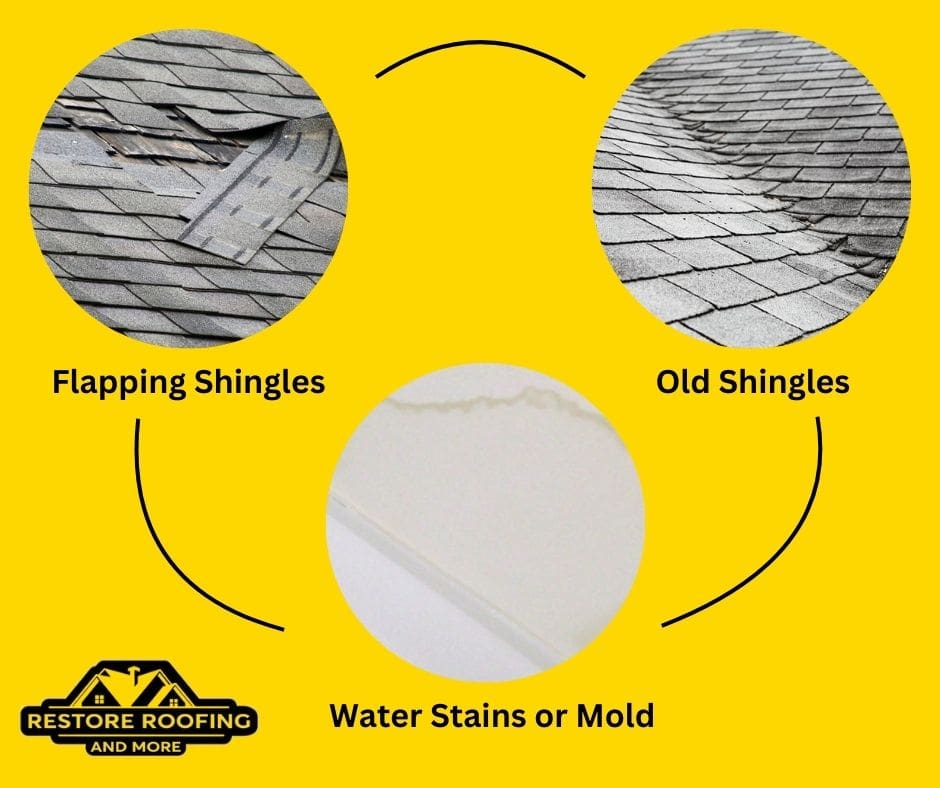
How to Know When Your Roof Needs to Be Replaced
As a homeowner, it’s important to keep an eye on the condition of your roof. While regular maintenance and repairs can extend the life of your roof, there comes a time when it’s no longer worth fixing. In this post, we’ll cover key signs that indicate it’s time to replace your roof and how to make an informed decision for the long-term protection of your home.
1. Age of Your Roof
The age of your roof is one of the most significant factors in determining whether it needs to be replaced.
- Asphalt Shingles typically last 20-25 years. If your roof is approaching or exceeding this age, it’s time to start thinking about a replacement.
- Metal Roofs can last 40-70 years, depending on the material.
- Tile or Slate Roofs have a lifespan of 50 years or more.
If your roof is nearing the end of its lifespan and showing signs of wear, it’s better to replace it before more serious issues arise.
2. Frequent Leaks and Water Damage
Leaks are one of the most obvious signs that your roof needs attention. However, if you’re constantly patching up leaks or finding new ones, it might be a sign that your roof is no longer structurally sound.
- Persistent leaks often mean the roofing materials have degraded beyond repair.
- Water stains on ceilings or walls inside your home are indicators of roof failure.
Ignoring leaks can lead to mold, mildew, and structural damage to your home, so it’s crucial to address them sooner rather than later.
3. Missing or Curling Shingles
Check your roof regularly for signs of damaged shingles:
- Missing shingles expose your roof to the elements, which can lead to leaks and further damage.
- Curling or buckling shingles are often a sign that the shingles are losing their effectiveness.
- Granule loss from shingles is another sign of age and wear. If you notice a large amount of granules in your gutters, it’s time to consider replacing the roof.
These signs usually indicate that the roofing materials can no longer perform their intended function.
4. Sagging Roof Deck
A sagging roof deck is a major red flag. It can be caused by structural damage or prolonged water damage.
- The sagging roof deck indicates that the roof’s structure is compromised and that a replacement is needed to ensure safety.
- This issue often requires professional evaluation to assess the extent of the damage and determine whether repairs are possible or if a full replacement is necessary.
5. Increased Energy Bills
If you’ve noticed a sudden increase in your energy bills, your roof might be to blame.
- A damaged or aging roof can lose its insulation properties, causing your heating and cooling systems to work harder.
- If your home feels drafty or excessively hot in certain rooms, the roof may no longer be providing adequate protection from the elements, suggesting the need for a replacement.
Replacing an inefficient roof with energy-efficient materials can ultimately save you money on energy costs.
6. Visible Light in Your Attic
If you can see sunlight coming through your attic, it’s a sign that your roof is compromised.
- Holes or gaps in the roof can allow light to pass through and rainwater to infiltrate.
- This is a strong indication that your roof is no longer providing the necessary protection against the elements and should be replaced.
7. Granules in Gutters
If you notice a significant amount of shingle granules in your gutters, it’s a sign that your roof is deteriorating.
- Granules protect shingles from UV rays and weather damage. Once they start wearing off, the shingles lose their protective barrier, leading to faster deterioration of the roof.
8. Missing Flashing or Damaged Flashing
Flashing around chimneys, vents, and skylights helps to protect these areas from leaks. If your flashing is cracked, missing, or deteriorated, water can seep in and cause damage to your roof’s structure.
- Damaged flashing can lead to persistent leaks, even if the rest of the roof appears to be in good condition.
9. Excessive Moss or Algae Growth
While some algae growth is common, excessive moss or algae can indicate that your roof is retaining moisture.
- Moss can lift shingles, causing them to separate and allow water to enter.
- If moss or algae growth is widespread, it’s often an indication of deeper roof problems that require replacement.
Conclusion
If your roof is showing any of these signs, it’s time to get a professional evaluation. At Restore Roofing And More, we specialize in roof replacements and repairs and can help you make an informed decision about your roof. Don’t wait until it’s too late—replace your roof before costly damage occurs.
Call us today for a free roof inspection or consultation!
